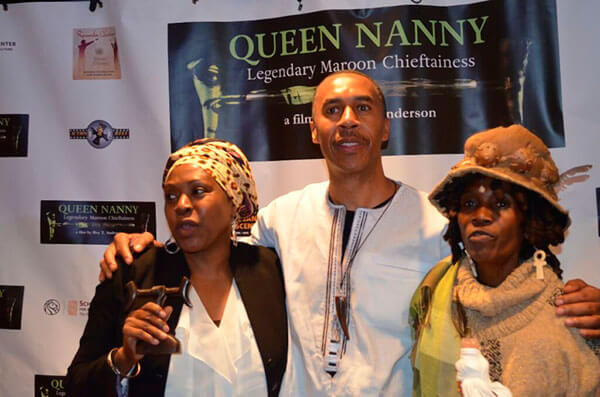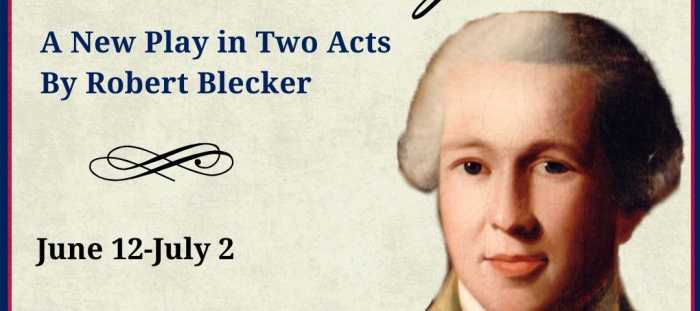“Queen Nanny – Legendary Maroon Chieftainess,” the 59-minute document which premiered at the United Nations on Jamaica’s National Heroes Day on Oct. 19, furthered the quest for definitive history about Nanny, a fighter, leader and soldier who led an all-male army through inhospitable terrain in Jamaica and in the end beat the British at their best to emerge the only female among seven heroes of Jamaica.
Records reveal that only four books have explained the fierceness of the African woman.
Maroon, filmmaker Roy T. Anderson said in doing research for the film he only encountered four books in the historical archives that detail the challenges Nanny faced in the 18th century.
Imagine that.
Compare that to the more than 100 books already penned about Bob Marley since he died in 1981 with Nanny’s magnanimous contribution more than three centuries ago.
Apparently, much of the tales about Nanny have been passed down through oral history.
And Anderson’s document offers an explanation – “Why would the British want to write a book about how an army of backward people led by a woman whipped the greatest army in the world.”
According to Maroons living in Jamaica, that kind of information would best be buried, erased and totally defied.
More than a few contend that suppression of Nanny’s feats was not beyond the capacity of the colonial enslavers.
That the warrior queen defied gender restrictions to now be regaled as the sole female among seven Jamaican heroes only skims the surface of her fierceness and particularly at a time when heavily-armed British soldiers practically ‘hunted’ Africans for capture.
Probably most significant is the fact Nanny might have employed tactics related to guerilla warfare in order to defeat the British army.
Stories about British soldiers reporting sightings of 10 feet tall trees that came alive and swallowed soldiers were prevalent.
Maroons now laugh off the phenomena to explain how Nanny tricked her trackers by layering her army with camouflage. In a re-enactment, the film shows men covered in branches and shrubbery to disguise from the enemy. Scenes depict troops maneuvering the treacherous course, unaware of traps Nanny set for them to fall into, and how her army surprised the redcoats wearing tree branches.
Maroons must have exercised guerilla warfare in order to be victorious.
Another of her tactics was that she skillfully caught bullets aimed at killing her men.
“If anyone can believe that a man (Moses) parted the seas…then, why not Nanny snatching bullets from mid-air?”
Legend has it that the Ghana, Africa-born, Akan chief was able to do just that.
“If it nuh go so, in Jamaica it nearly go suh,” Olivia “Babsy” Grange, a Member of Parliament and former minister of culture said.
In translation the parliamentarian’s comment interprets to mean that there is truth in the folklore and Nanny’s quickness may have aided in staving off bullets.
Embellished tales were re-enacted throughout the documentary.
Gloria Simms, a Maroon, Nanny Queen known as Mamma G or Gaa’mang portrayed the legendary chieftainess.
The film also retraces the route Nanny might have traversed through the treacherous mountains. Using an abeng (horn from cow) to sound calls of communication, Nanny’s many strategies proved ideal to the conditions she faced fighting the British.
“The abeng was like our cell phone,” a maroon joked in the film.
But it was no joke that Nanny stayed in constant communication with her army.
Also explained in the film is that in the Akan tradition, Nanny defines “any chief who is female.”
Most of all the spirit of Nanny was emphasized and amplified by several women, among them: Shelley Fraser-Pryce, the fastest woman on earth; Afua Cooper, a professor, author and poet who reside in Canada and specialize in African-Canadian history, Rita Marley, singer popularly known as the Queen of Reggae and Grange, who on the date of the screening joined the ranks of Jamaica’s high heroes’ day honor.
The document also amplifies the belief that Nanny arrived in Jamaica a free woman, with entourage and helpers in order to see how her people fared after leaving the continent and away from the African village.
From all indications, the story of Jamaica’s Nanny has not been fully told and despite the fact a number of sources were interviewed the “person of universal value,” Anderson described as “Queen Nanny – Legendary Maroon Chieftainess” is yet to be fully explained.
The film premiered in Jamaica on Oct. 23 at the University of the West Indies.



























